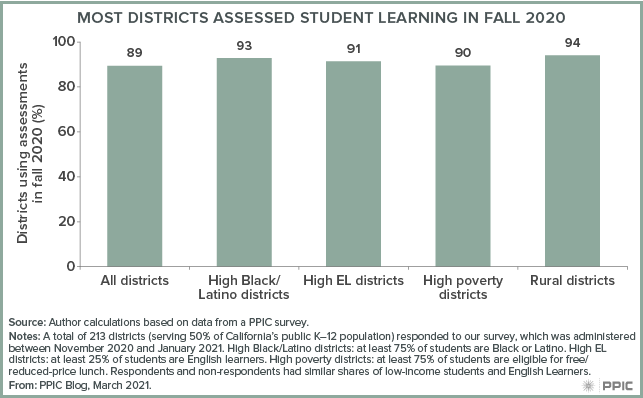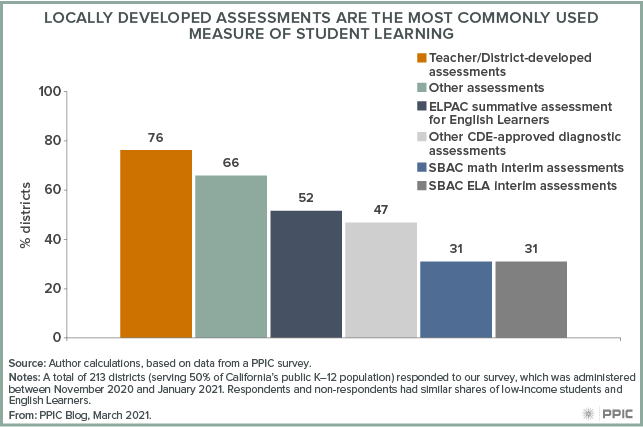Teachers, schools, and policymakers will face unprecedented challenges as schools reopen for in-person instruction. One of the key challenges is to figure out how to provide resources and support to students, especially those who did not thrive during distance learning. Assessment data is critical to identify learning gaps, develop intervention strategies, and mitigate learning loss.
Year-end assessments for math, English language arts, science, and English language proficiency were waived last spring, and the state is preparing to apply for a flexibility waiver this year. These summative assessments measure student achievement by comparing it against some benchmark or standard, and some are used for accountability purposes. However, deep concerns about learning loss have prompted districts and schools to rely on diagnostic assessments (which measure pre-instruction knowledge and skills to help teachers fine-tune their lesson plans) and formative assessments (which measure student success in meeting short-term learning goals throughout the year) to monitor student progress.
When PPIC surveyed school districts from November 2020 to January 2021, 32% of districts reported that assessing student achievement was a higher priority in the fall than it had been in the spring. The vast majority (89%) used assessments to measure learning even in the absence of a requirement—regardless of student characteristics (racial/ethnic composition, poverty levels, and educational needs) or geographic location.

Districts reported using a variety of diagnostic and formative assessments—most commonly teacher- and district-developed assessments (76%). More than half of districts reported using the summative English language proficiency assessment for California (ELPAC) for English Learners. Nearly half of districts reported using diagnostic and formative assessments approved by the California Department of Education (such as Measures of Academic Progress, or MAP). Fewer than half of districts (48%) reported using an assessment to place ninth-graders into math courses.

Even if California does not use summative assessments for accountability purposes this year, it is essential that teachers, parents, and policymakers have a broad array of information about student learning. In states that administered summative assessments in 2020, results paint a bleak picture of student learning loss, especially among nonwhite and low-income students. Identifying students who have fallen furthest behind during the pandemic is of immense importance for state policymakers as they try to help schools boost student success and close unprecedented learning gaps over the coming years.





